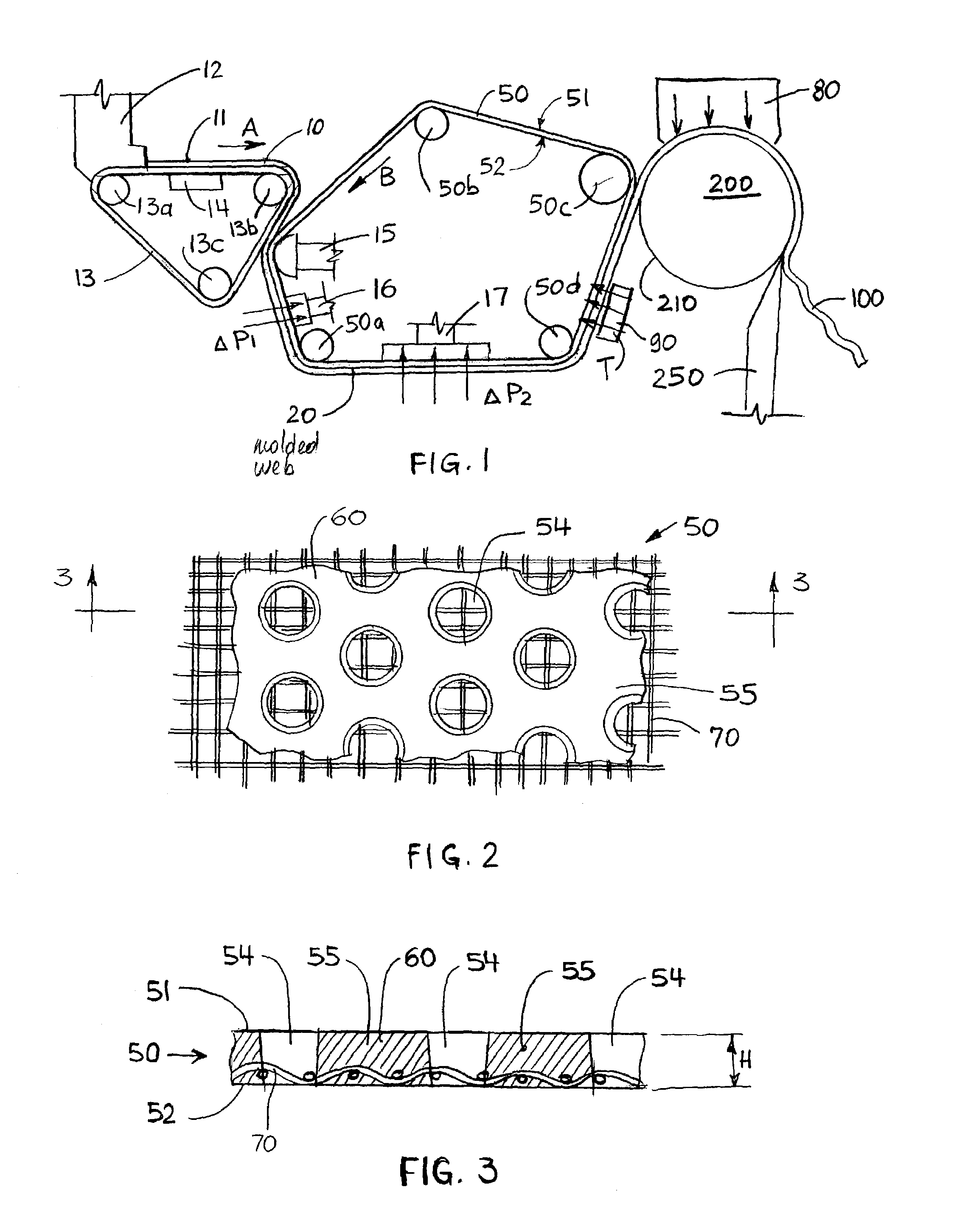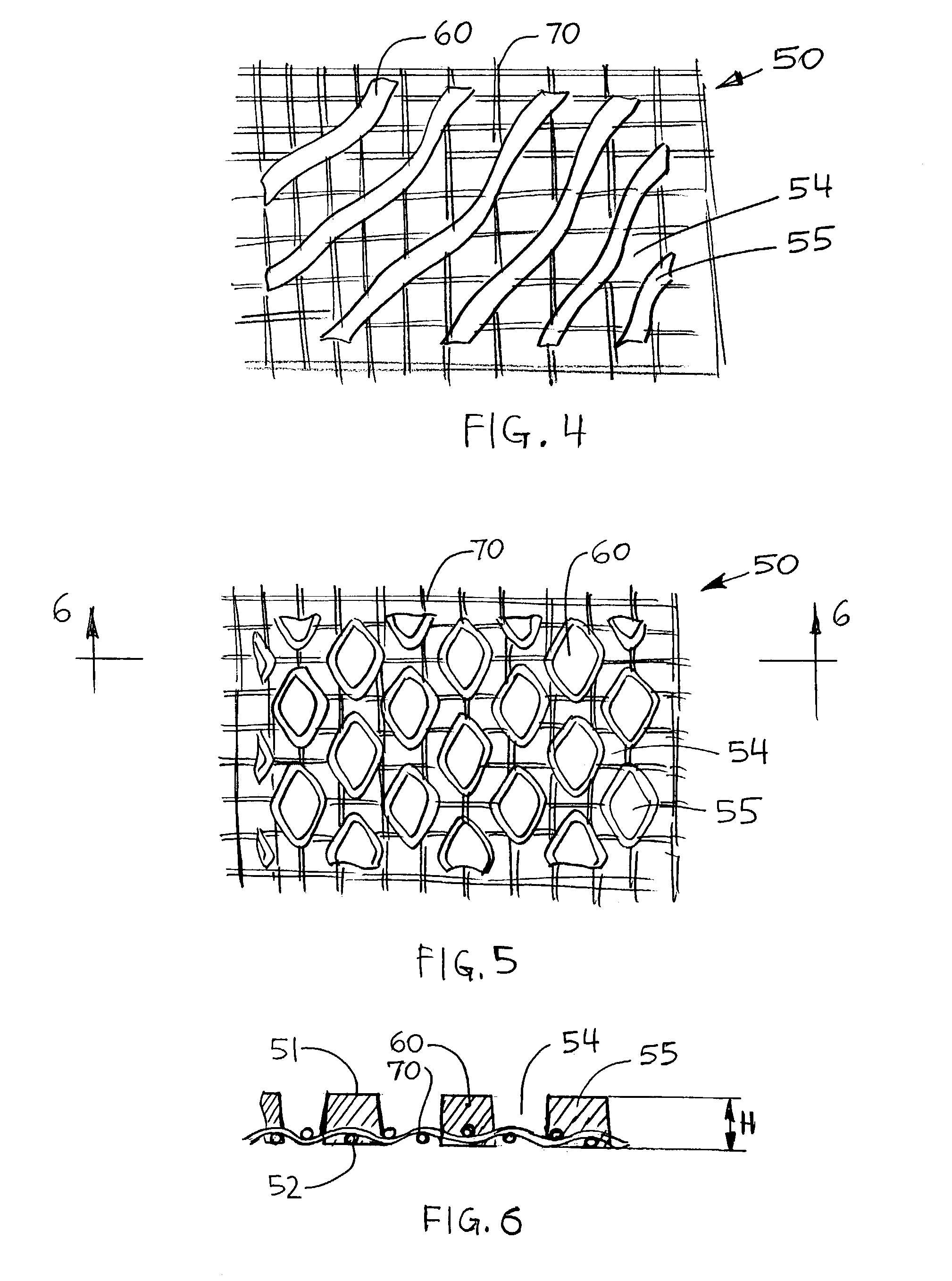Process for making unitary fibrous structure comprising randomly distributed cellulosic fibers and non-randomly distributed synthetic fibers
a cellulosic fiber and synthetic fiber technology, applied in the direction of manufacturing tools, patterned paper, press sections, etc., can solve the problems of poor wettability, less flexibility, and limited use of cellulose fibers derived from trees in disposable tissue, and achieve high density and high density
- Summary
- Abstract
- Description
- Claims
- Application Information
AI Technical Summary
Benefits of technology
Problems solved by technology
Method used
Image
Examples
Embodiment Construction
[0031]As used herein, the following terms have the following meanings.
[0032]“Unitary fibrous structure” is an arrangement comprising a plurality of cellulosic fibers and synthetic fibers that are inter-entangled to form a single-ply sheet product having certain pre-determined microscopic geometric, physical, and aesthetic properties. The cellulosic and / or synthetic fibers may be layered, as known in the art, in the unitary fibrous structure.
[0033]“Micro-geometry,” or permutations thereof, refers to relatively small (i.e., “microscopical”) details of the fibrous structure, such as, for example, surface texture, without regard to the structure's overall configuration, as opposed to its overall (i.e., “macroscopical”) geometry. For example, in the molding member of the present invention, the fluid-permeable areas and the fluid-impermeable areas in combination comprises the micro-geometry of the molding member. Terms containing “macroscopical” or “macroscopically” refer to a “macro-geom...
PUM
| Property | Measurement | Unit |
|---|---|---|
| Temperature | aaaaa | aaaaa |
| Weight | aaaaa | aaaaa |
Abstract
Description
Claims
Application Information
 Login to View More
Login to View More - R&D
- Intellectual Property
- Life Sciences
- Materials
- Tech Scout
- Unparalleled Data Quality
- Higher Quality Content
- 60% Fewer Hallucinations
Browse by: Latest US Patents, China's latest patents, Technical Efficacy Thesaurus, Application Domain, Technology Topic, Popular Technical Reports.
© 2025 PatSnap. All rights reserved.Legal|Privacy policy|Modern Slavery Act Transparency Statement|Sitemap|About US| Contact US: help@patsnap.com



